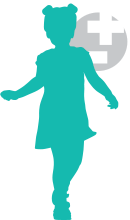Component 5: Geometry and Spatial Sense
Standard 5.a: Children learn to identify shapes and their attributes, solve mathematical situations using shapes, and explore the positions of objects in space.
By the following age ranges, children typically, for example:
- Explore the size and shape of objects through various means (e.g., banging, mouthing, dropping, etc.)
- Explore the way objects move by tracking objects with their eyes and head
- Explore distance by reaching for something
- Explore their spatial sense through movement, both involuntary and voluntary (e.g., being picked up, scooting, and pulling up)
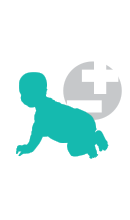
- Explore how differently shaped objects fit or do not fit together by manipulating such things as nesting cups or stacking cones
- Explore barriers to movement when not able to walk or push past something
- Compare the attributes of objects or pictures and identify those that are similar
- Explore their spatial sense (e.g., by bumping into things; squeezing into a tight space; or looking at an adult or a toy from a different angle, when bending over, or with head turned)
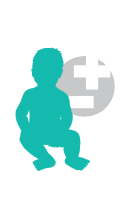
- Match familiar shapes (e.g., circle, square, triangle) that have the same size and the same orientation
- Attempt to stack blocks as high or higher than themselves
- Match simple shapes (e.g., placing a shape on a shape board)
- Explore gravity (e.g., push toy cars down an incline, such as a slanted board)
- Respond to spatial directions, such as “come here,” “go over there,” and “get down on the floor,” especially if the words are accompanied by gestures, such as pointing and/or signs
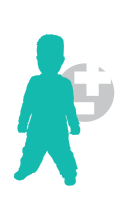
- Link or sort (put together) familiar shapes (e.g., circle, square, triangle) that have different sizes and orientation
- Build pictures or designs with two-dimensional shapes and create buildings or structures with three-dimensional shapes, such as building blocks
- Recognize and name some familiar shapes in their home language(s)
- Understand and use basic language related to locations (e.g., “above,” “below,” “under,” “over”)
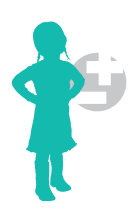
- Build familiar two-dimensional shapes from components or parts (e.g., using a set of circle, rectangle, and line shapes to create an image of a snowman)
- Combine and separate shapes to make designs or pictures (e.g., completing shape puzzles)
- Build simple examples of buildings, structures, or areas (e.g., their classroom or playground) with three-dimensional shapes, such as building blocks
- Name familiar two-dimensional shapes in their home language(s) (circle, triangle, square, rectangle), regardless of their size or orientation
- Use basic language to describe their location (e.g., “I am under the bed.)
- Correctly follow directions involving their own positions in space (e.g., “move forward,” “sit behind,” etc.)
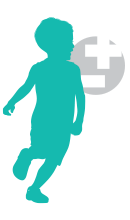
- Describe and compare shapes using their attributes in their home language(s) (e.g., “a triangle has three sides, but a square has four.”)
- Combine and separate shapes to make other shapes (e.g., using two triangles to make a square)
- Build more complex models of buildings, structures, or areas (e.g., their classroom or play ground) with three-dimensional shapes, such as building blocks
- Correctly name familiar shapes in their home language(s) (e.g., circle, triangle, and square) and less familiar shapes (e.g., hexagon, trapezoid, and rhombus)
- Correctly name some three-dimensional shapes in their home language(s) (e.g., cube, cone, cylinder)
- Understand and use language or similar words in their home language(s) related to directionality, order, and the position of objects, such as “up,” “down,” “in front,” and “behind”
